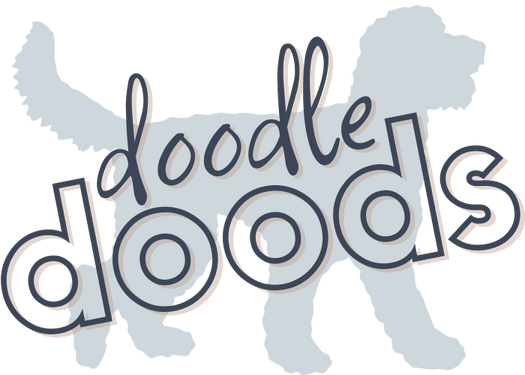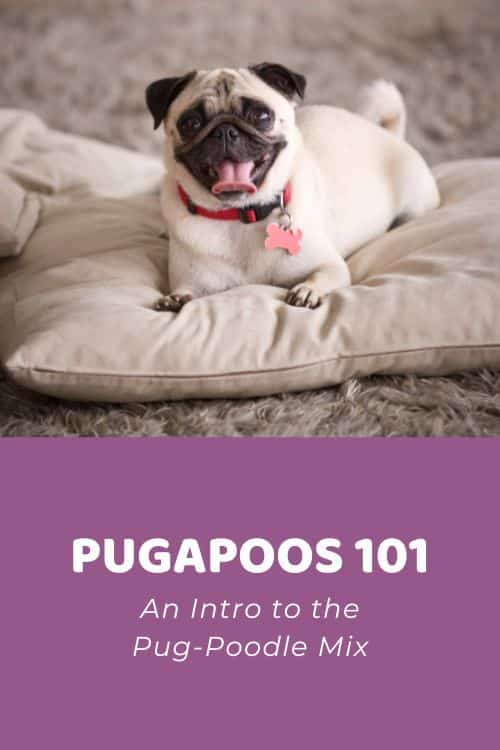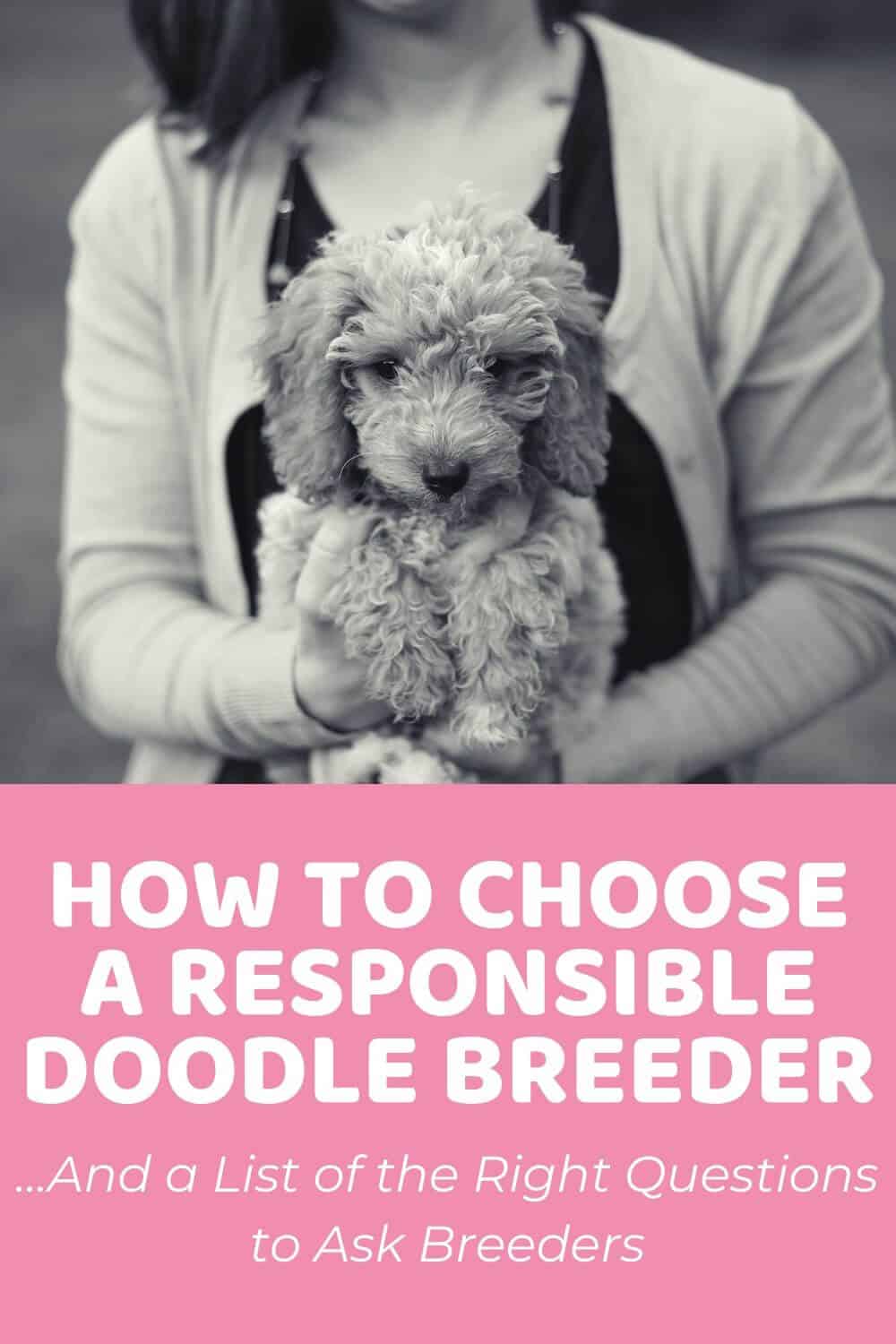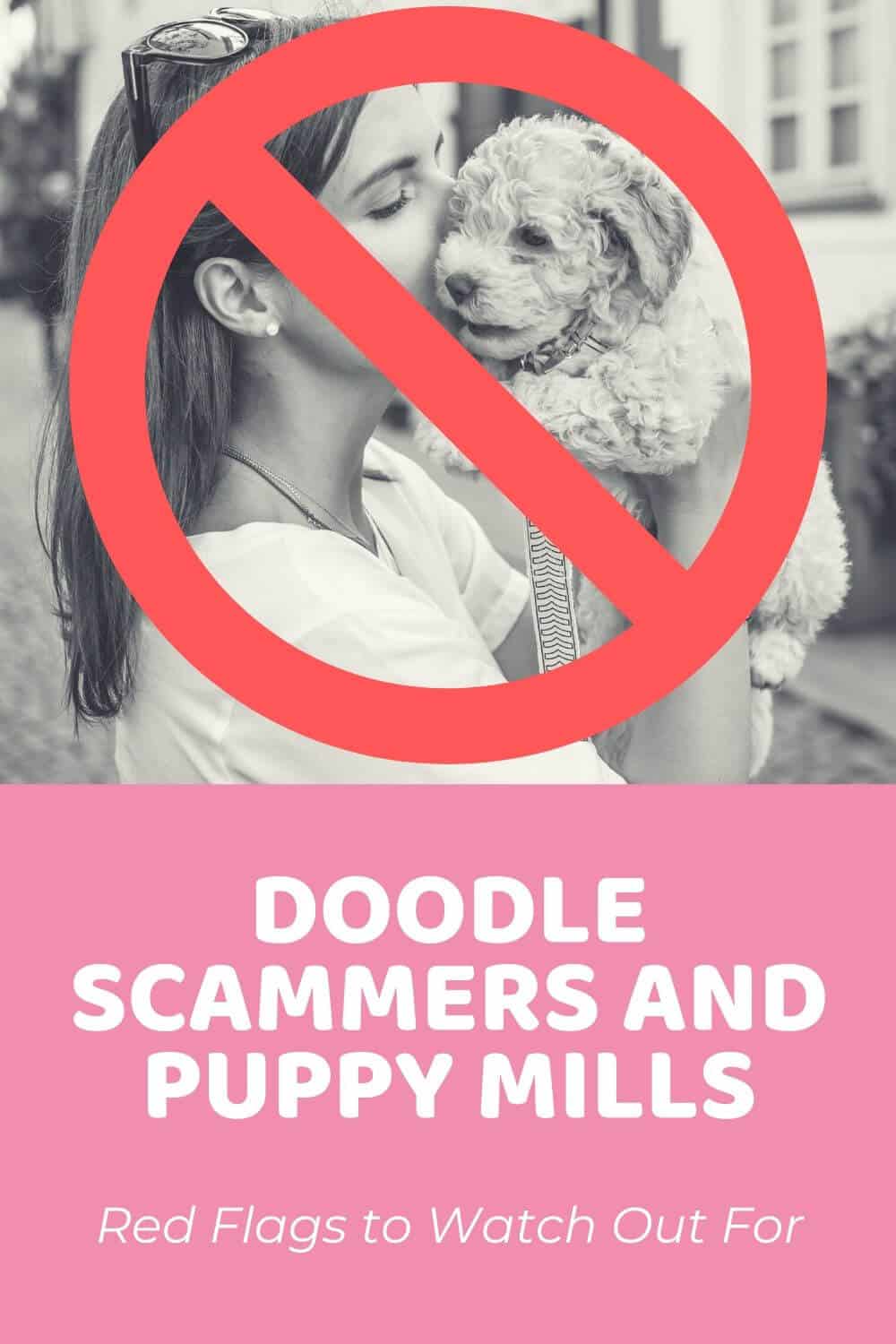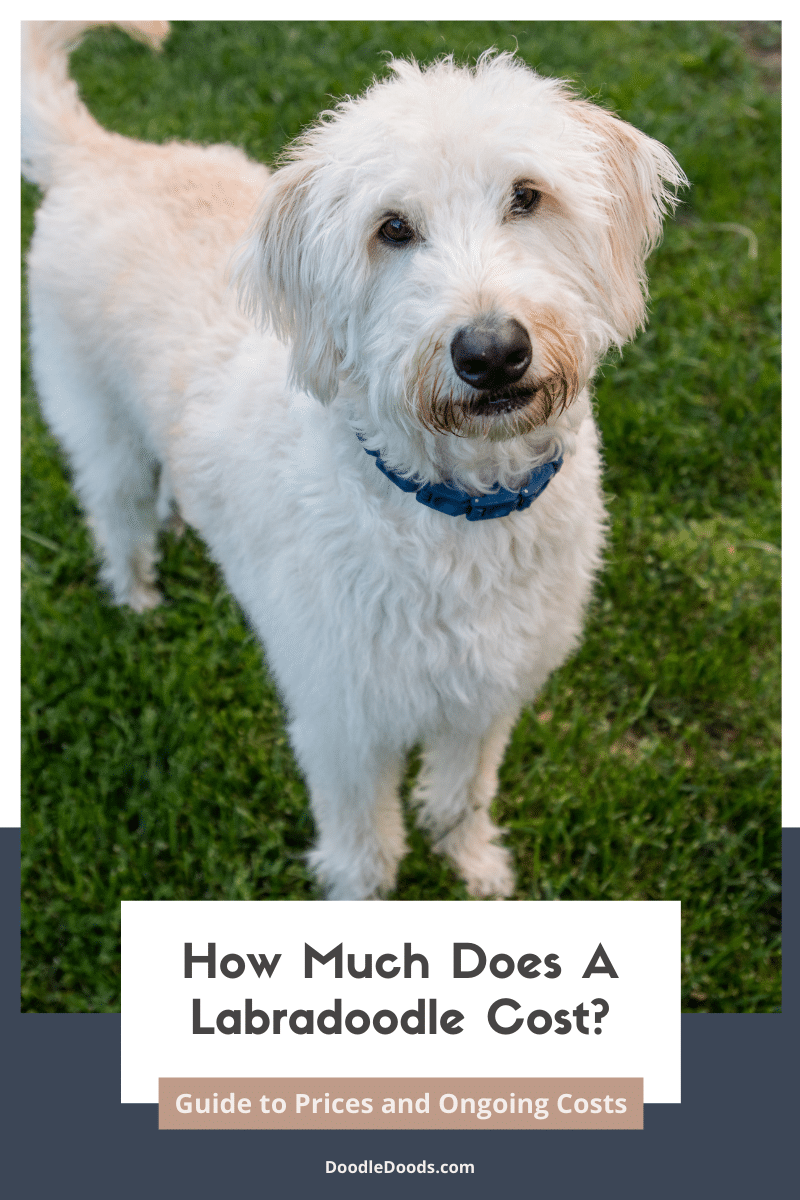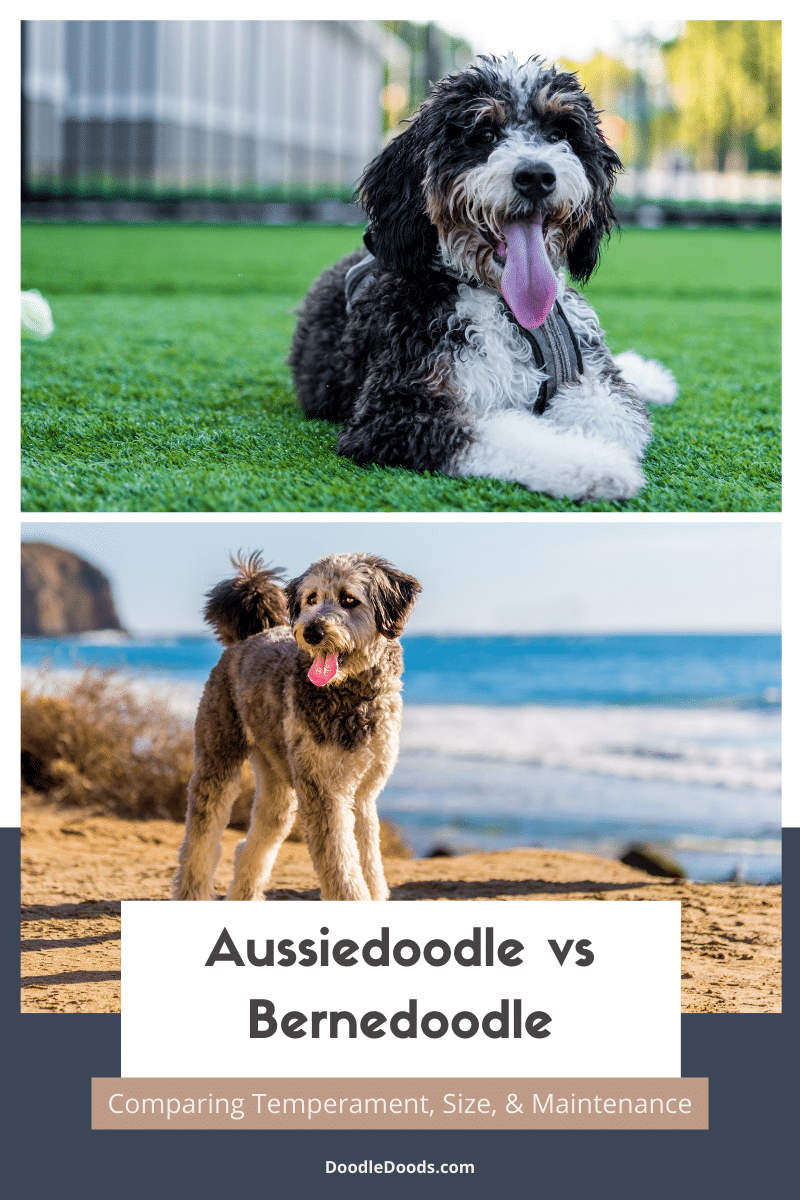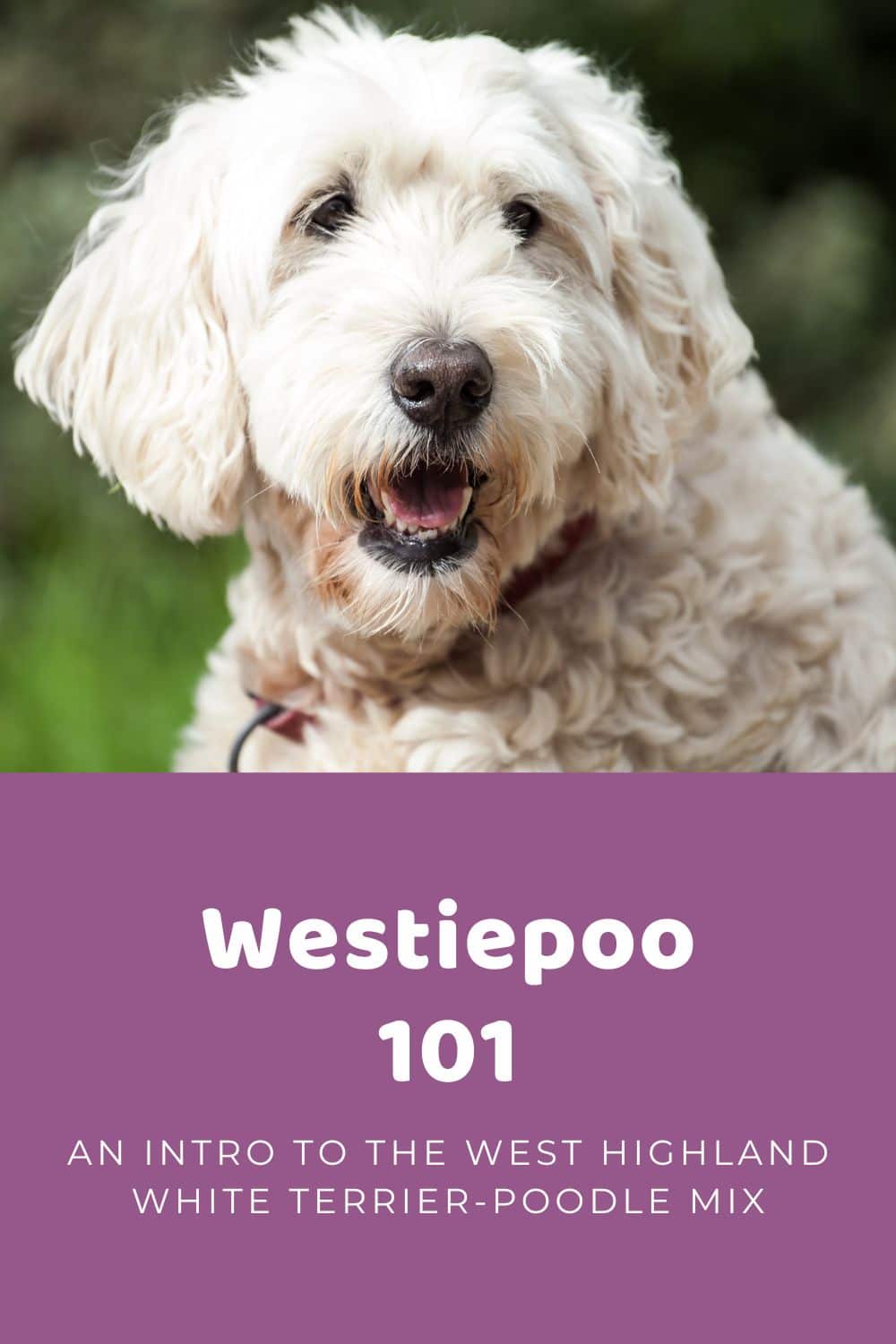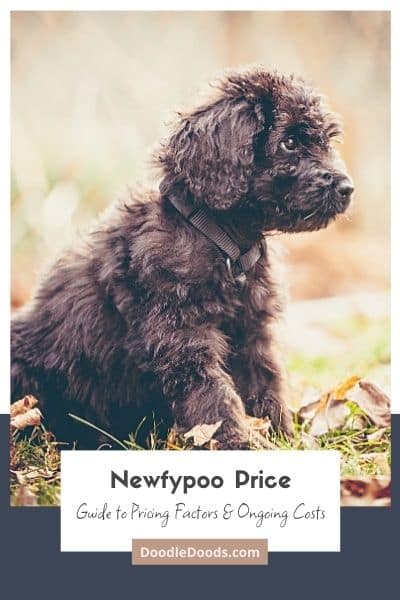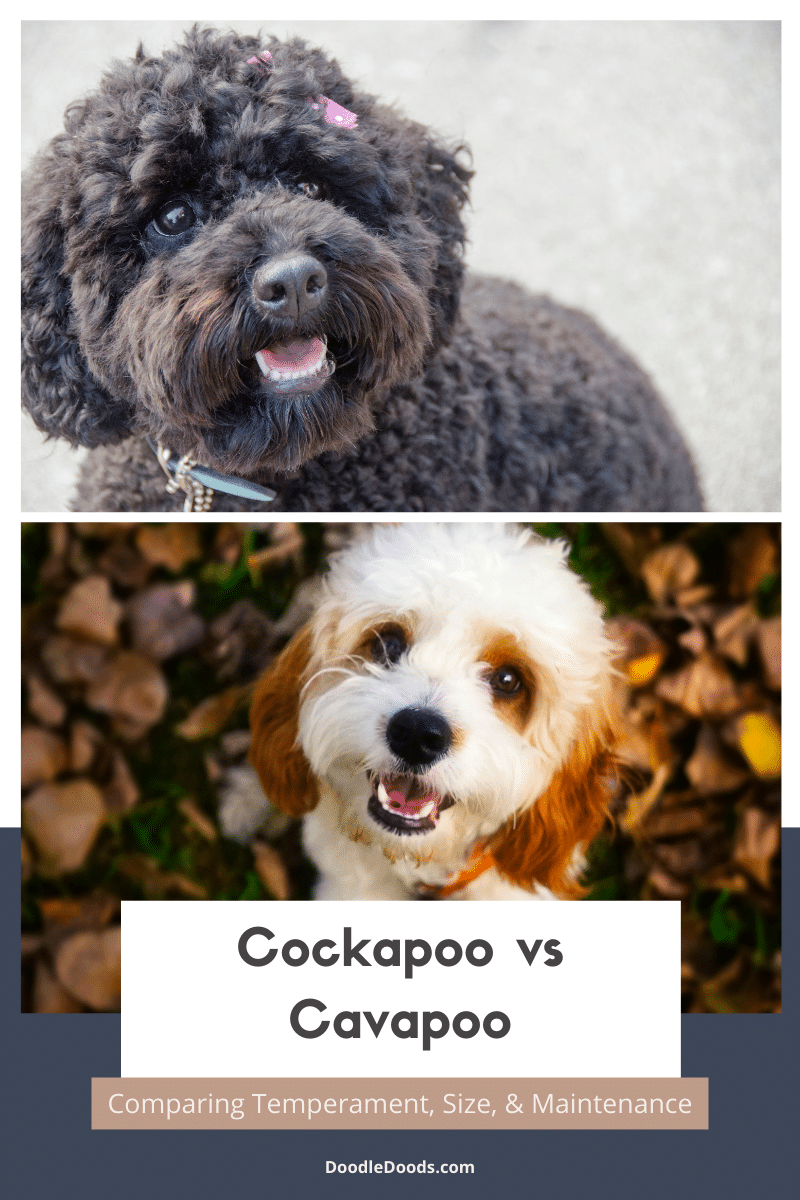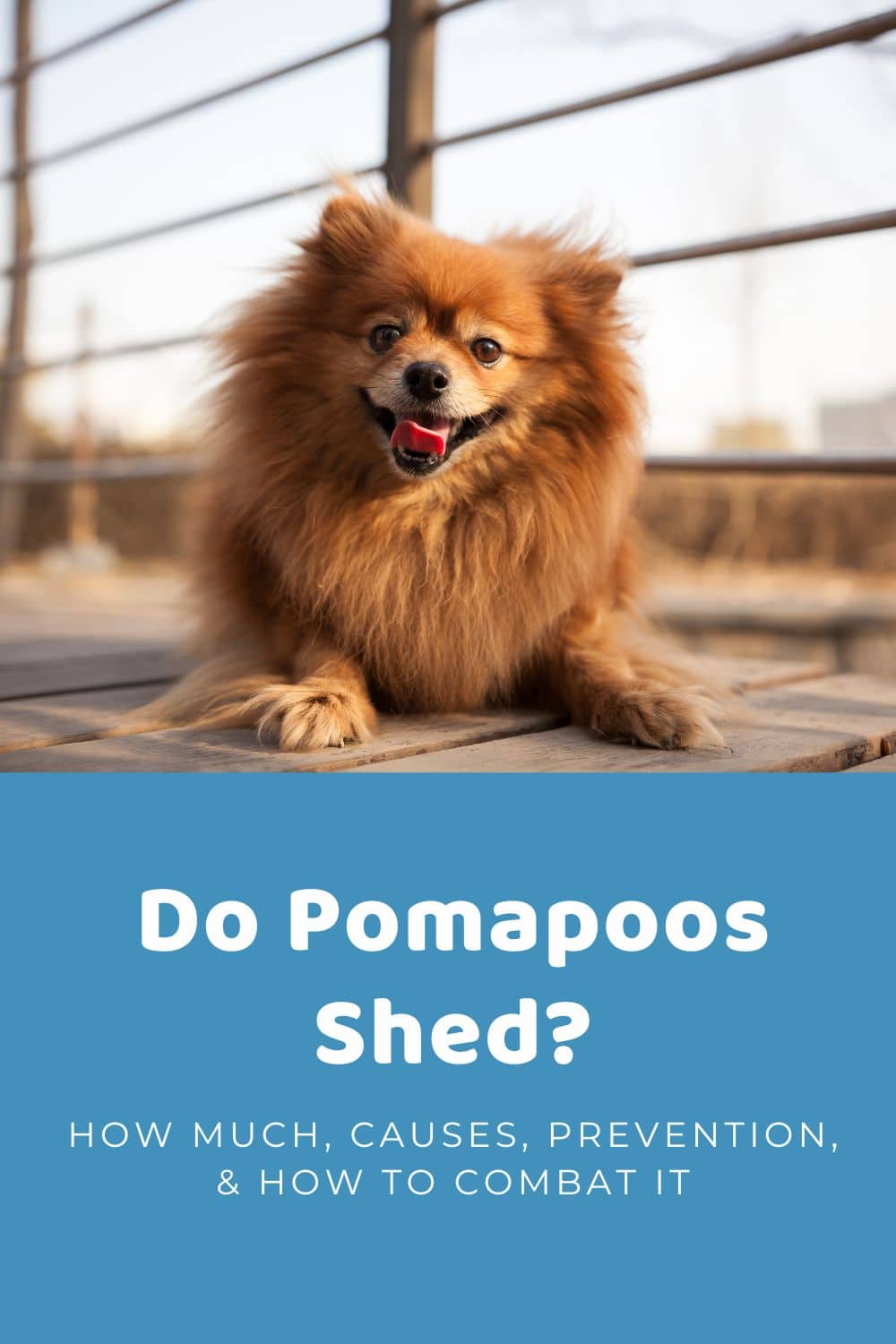Friendly with a big, expressive personality, the Pugapoo is a little-known Dood that is plenty loved by those who have had the pleasure of adopting or spending time with one. With their charming, fun-loving personality and gorgeous little-dog looks, they make great companion canines for singles, seniors, and families with smaller homes.
If you have found your way to this page, you’ve likely had the pleasure of coming into contact with a Pugapoo. That or you’re a massive fan of the quirky Pug but are looking for a low-shed, allergy-friendly alternative. Either way, hopefully, the information you find here will help you make a decision on whether or not to adopt one of these cutie pie pups.
Table of Contents
- What Exactly is a Pugapoo?
- 3 Interesting Facts About Pug-Poodle Mixes
- Pugapoo Physical Appearance
- Pugapoo Pictures (Puppy & Adult)
- Pugapoo Size
- Pugapoo Personality & Temperament
- Pugapoo Variations & Generations
- Pugapoo Health
- Pugapoo Exercise & Training
- Pugapoo Coat & Grooming
- Where Can You Get Pugapoo Puppies?
- Pugapoo Frequently Asked Questions
Learn How to Care for Your Doodle Puppy!

Perfect for first-time Doodle parents, get ALL your questions answered, including questions new Doodle parents don’t even think to ask.
Plus, get $700 worth of Bonus Materials for FREE, including:- Doodle Parenthood Community and Support Group ($190 value)
- Doodle Puppy Growth Tracker ($20 value)
- EMERGENCY Cheatsheet: When To Call The Vet Immediately ($50 value)
- HELP! Button ($145 value)
- And SO MUCH MORE!
What Exactly is a Pugapoo?
A mix of the Pug and either a Miniature or Toy Poodle, we don’t really know when the Pugapoo first came about. It was likely sometime in the 90s when Doodle popularity took off big time. Breeders taking advantage of the “hypoallergenic dog” craze started combining Poodles with just about every type of hound out there. Doodles of all kinds, in our oh-so-biased opinion, really do make the very best pets.
Despite the nation’s love affair with both Pugs and Poodles, Pugapoos are surprisingly not that often heard of. For that reason, there aren’t very many facilities that specialize in breeding these fabulous pups. This means not quite as much is known about them as the original Doods – the Labradoodle, the Goldendoodle, and the Cockapoo. So, at present, what we do know about Pugapoos is inferred chiefly from the parent pups.
The glorious Poodle, a product of the German hunting scene, these days is mainly associated with crazy haircuts and the glamorous world of dog shows. In reality, this is doing these super dogs a bit of a disservice. Originally water retrieving pups, Poodles have come to be recognized, by those in the know, as one of the most intelligent breeds out there (second only to the Border Collie). The more miniature versions of these dogs were created by people who appreciated how such brains and beauty interacted to form a perfect little pet.
Said to be named for the Latin word for ‘fist’ because supposedly that’s what their face resembles, pugs originated in China. The breed is old – VERY old. Prized by Emperors who kept them as companions, it’s really no wonder that pugs have velcro-dog tendencies. Like the more miniature Poodles, these funny little canines also became popular with European aristocrats, so their regal nature runs deep. Recently, though, some countries have placed restrictions on breeding these dogs due to issues caused by their flat faces.
3 Interesting Facts About Pug-Poodle Mixes
- Both Poodles and Pugs were popular with European royalty giving Pugapoos an interesting and very regal history.
- Combining Pugs with Poodles could be very beneficial to breeding lines as currently, Pugs have all kinds of health problems related to their facial structure.
- Pugs and smaller Poodles have been kept as companion animals from the beginning. This means Pugapoos have inherited all the very best qualities of lap dogs.
Pugapoo Physical Appearance
Poodles and Pugs are quite distinct dogs in their appearance, so it’s not always easy to predict how your Pugapoo will look when they grow up. As relatively recent Doods, there aren’t yet any set standards for these dogs in terms of their build, features, or colors. In fact, each litter of Puggies can contain wildly different-looking dogs. This is especially the case when they are first-generation.
What this means is that you could end up with a longer-snouted, curly-coated, athletic dog or a short-snouted, fur-coated, stout dog – or really anything in between. In terms of color, though, despite the addition of the rainbow-hued Poodle, it’s most likely that your Pugapoo will sit somewhere in the Pug shade range. This includes silver, apricot, fawn, and black. These dogs tend to end up with patches of black or darker hair around their faces, also in the pug style.
Pugapoo Pictures (Puppy & Adult)
Pugapoo Size
Pugapoos are considered toy-to-small-sized dogs, rarely growing more than 12 inches in height to the shoulder. The exact size of your pup largely depends on the Poodle (or Poodles) used in the breeding (Toy or Mini). The Toy Poodle will give you a smaller Pugapoo and a Miniature one, a slightly larger one. Either way, their diminutive size, among other things, makes them nicely adoptable pups.
Pugapoo Personality & Temperament
Temperament is one of the most essential aspects to check out in any dog you may be looking to adopt. It’s probably one of the first things you will want to know about. While every pup is unique with their own dear little personality, a few traits are more common to certain breeds. While, as covered above, we are still learning about Pugapoos, we can always check the parent breeds to see what we might expect from them.
As with their appearance, the two-parent pups of Pugapoos are pretty different in their personality. In fact, to the casual observer, they may seem to have nothing in common. However, both dogs are known to be affectionate and outgoing and to adore spending time with their family. For this reason, they do better in situations where they have near-constant companionship. Pugapoos can suffer badly from separation anxiety, so they shouldn’t be left home alone for too long.
With plenty of socialization, Pugapoos get along with children of any age just fine. However, with younger ones, close supervision is needed to ensure that play is not getting too rough. Not only does this pose an injury risk to smaller, more delicate dogs, but any pup could lash out if they feel threatened or anxious. You should take the time to teach your kids how to safely interact with a dog before bringing one into your home.
Like most little dogs, Pugapoos can be a bit mouthy. This is only enhanced by their intelligent and alert nature. These dogs can make excellent watchdogs if that appeals to you. If not, with a bit of work, they can likely be trained out of this behavior – at least in part. However, it will always be part of their instincts and probably something they return to when feeling particularly stressed or overexcited.
Pugapoo Variations & Generations
Within the world of Doodle breeding, you might hear talk of different generations of dogs. This isn’t quite as complicated as it sounds, but it is definitely something you will be aware of when looking to adopt one.
Basically, the traditional Doodle is a combination of a purebred Poodle and a purebred other breed – in this case, a Pug. However, a breeder may breed a Pugapoo pup with either a Poodle or another Pugapoo to try and make something happen in terms of their genes, i.e., to ensure a particular color or coat type.
These are the various different possible combinations:
| 1st Parent | 2nd Parent | % Pug* | % Poodle* | |
| F1 Pugapoo (first-generation) | Pug | Poodle | 50% | 50% |
| F1B Pugapoo (first-generation backcross) | F1 Pugapoo | Poodle | 25% | 75% |
| F1BB Pugapoo (first-generation backcross backcross) | F1B Pugapoo | Poodle | 12.5% | 87.5% |
| F2 Pugapoo (second-generation) | F1 Pugapoo | F1 Pugapoo | 50% | 50% |
| F2B Pugapoo (second-generation backcross) | F1 Pugapoo | F1B Pugapoo | 37.5% | 62.5% |
| F2B Pugapoo (alternate cross) | F2 Pugapoo | Poodle | 25% | 75% |
| F3 / Multigen Pugapoo | F1B Pugapoo or higher | F1B Pugapoo or higher | Varies | Varies |

Pugapoo Health
In general, there is less to worry about regarding health with crossbred over purebred dogs. This is because a much larger gene pool reduces the chance of genetic conditions being passed along canine breeding lines. That’s not to say the Pugapoo is entirely immune to all conditions. If they happen to have inherited that Pug short snout, for instance, they could have some issues with their breathing, especially when it is very hot or when they are overexerting themselves.
Aside from that, these dogs also have vulnerabilities towards diabetes mellitus (sugar diabetes) from their Poodle size. The risks of this increase if your pooch is overweight – so that’s definitely something to keep in mind. They are also susceptible to patellar luxation, a painful slippage of the knee, the hormone issue Addison’s Disease, as well as various sensitivities and intolerances to certain food ingredients that again come from their Poodle side.
On the whole, though, Pugapoos are pretty healthy little chappies. As smaller dogs they benefit from a longer lifespan than larger ones. Given the life expectancy of the parent breeds, you can happily expect your Pugapoo to be with you on average for 12 to 14 years, with many living much longer than that with the right kind of care and attention.
Pugapoo Exercise & Training
Both Poodles and Pugs are very smart and can quickly learn new commands. However, Pugs do tend to have a bit of a stubborn streak, and this can be picked up by the Pugapoo. If you’re a little less experienced in dog training, then you will want to do a little research to ensure that you are up to date on the best techniques. We recommend positive reinforcement, which is a method that focuses on encouraging good behaviors through a system of rewards rather than punishing unwanted ones. Baxter and Bella’s Online Puppy School is a great place to start if you are entirely new to canine training.
Food is always a good motivator for these dogs, but be careful what kind of treats you offer your pup. With their low-to-moderate activity level, Pugapoos can quickly start to pile on the pounds. Vegetables (especially frozen ones) make excellent alternatives to your usual store-bought, protein-rich snacks. If your pup doesn’t take to these right away, consider smothering them in something they love, such as peanut butter, at least at first, to get them used to these new types of treats.
With regards to exercise, Pugapoos need between 30 and 60 minutes of walks per day based on their specific life stage. If you do like to take them out for an hour, it’s better to break this down into two 30-minute sessions. You might have to reduce this further for short-snouted dogs when it’s a little hotter. Carry plenty of water and stick to shaded areas during peak summer times. Avoiding the hottest part of the day is also a good idea.
Pugapoo Coat & Grooming
The super-desirable, low-shed, single-layered Poodle coat is the whole reason Doodles were created in the first place. However, if you were purchasing a Pugapoo with the expectation of them inheriting this coat type over the Pug’s short, double-layered one, you could be in for a shock. Genes aren’t always predictable and, despite breeder promises, if your dog has one Pug parent and one Poodle parent, it could go either way.
That being said, some facilities work with multigen puppies, meaning they often backcross Doodles with Poodles to give their puppies more of the Poodle genes and so a greater chance of inheriting that in-demand coat. Yet, even if you do get what you want (if you do want a Poodle coat), you might not end up being quite so pleased about that when you realize just how much work is involved in keeping it in good condition and tangle-free…
That long, single-layered curly hair coat requires DAILY grooming. If you do find yourself skipping a few days, wondering how it could hurt, you could be in for a world of pain the next time you pick up a brush. Matting is a massive issue, especially if you prefer to keep your pooch’s coat on the longer side. We recommend regular trips to the grooming for a thorough wash, brush and trim to help you stay on top of coat management. However, if you prefer to get things done yourself at home, check out our handy grooming articles.
Where Can You Get Pugapoo Puppies?
The fact that Pugapoos aren’t that well known yet has some advantages, especially in terms of cost, but also some disadvantages, mainly in terms of their availability. If you do manage to find the right kind of breeder, then you are looking for a $1,000 to $1,500 price range for one of these delightful pups.
However, to avoid health problems, among others things, make sure to purchase your pup from a reputable breeder. Such facilities carefully screen their breeding animals for the presence of any genetic issues that could be passed along to puppies. These breeders are also more likely to produce psychologically healthy and well-socialized dogs, unlike, for instance, a puppy mill.
Alongside puppy mills, where the focus is placed on profit over and above the wellbeing of the breeding animals, you need to be careful of scammers. These people advertise puppies, take a down payment, and then disappear. Watch out for certain red flags that will tell you that you are dealing with a dishonest individual. These include being unwilling for you to meet the puppies (even via video chat), not seeming to know much about them, and charging you well below the asking rate for these dogs.
To ensure your puppy comes from the right place to give them the very best start in life, check out our breeder directory. Another great way to track down responsible breeding facilities is via social media recommendations and other Doodle expert sites. If you can find a place with a decent website and plenty of reviews from people who have purchased a puppy from them, then you are likely on to a winner.
Pugapoo Frequently Asked Questions
Do Pugapoos make good pets?
Like most Doodles, Pugapoos make excellent pets under the right conditions. With their small size, low exercise needs, and love of spending time on the couch with their favorites, Pugas are particularly well suited to apartment dwellers – especially to more sedentary ones, seniors, or families with slightly older children where there is always someone about to keep them company.
Do Pugapoo dogs bark?
As smaller dogs, Pugapoos can be predisposed to barking. This is made more of an issue by the fact that their Pug peeps, although not bred to it, make excellent watchdogs. However, if this is a behavior you’re looking to overcome, then training and early socialization should really help. If your dog suddenly starts barking, it may signal an underlying problem, such as they are feeling bored, stressed, or are in pain.
Do Pugapoos have breathing issues?
A recent issue with Pugs comes from facilities selectively breeding them to have ever smaller snouts for that cute, squashed-face appearance. However, this can severely impact the dog’s breathing. Some countries have started to place restrictions on these kinds of dogs for that very reason. The good news with Pugapoos is that genes inherited from the Poodle side are likely to make their muzzle a little longer. This should help them avoid this often fatal flaw of the breed.
If you are looking for a Dood on the smaller end of the scale and with less rigorous exercise requirements, then the Pugapoo might very well be the one for you. These friendly, funny, cute little characters make excellent companions to just about anyone – they are incredibly versatile little pups. Just makes sure that if you do take one of these lovely dogs on, you have the time to dedicate to their upkeep and to just generally spend with them because they are going to need a fair bit of company to keep them healthy and happy and far away from any trouble.
